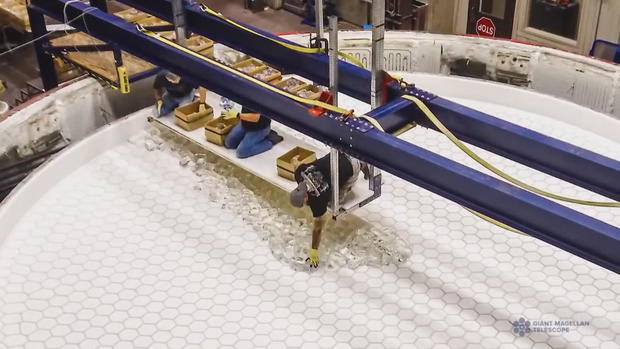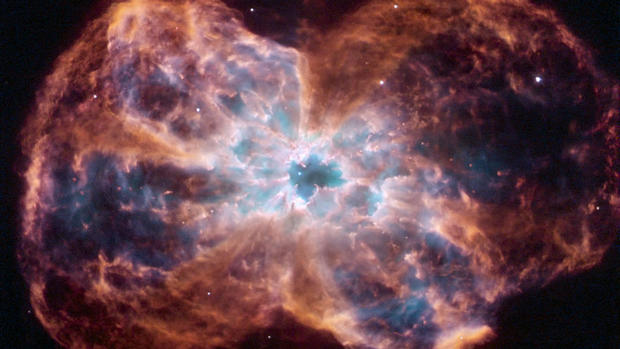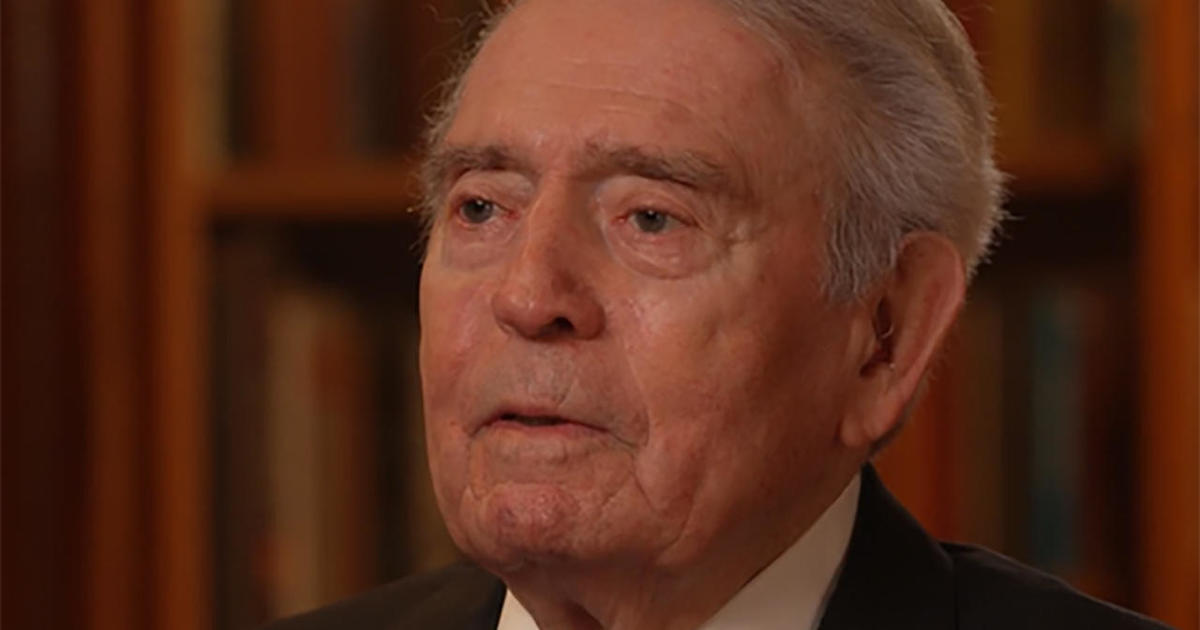Building Giant Magellan, the world's largest telescope
People have been gazing skyward at night for all of human history, studying the stars and wondering what could lie beyond them. But soon, scientists will have a powerful new tool at their disposal: the Giant Magellan Telescope, which is expected to be the world's largest optical telescope once it's completed.
Under the football stadium at the University of Arizona, Patrick McCarthy, the vice president and senior astronomer at the GMT project, heads the international group building the Giant Magellan.
"One of the big discoveries in astronomy in the past 20 years is that 97% of the universe, we have no idea what it is," McCarthy said.
The Giant Magellan project is working to change that. The telescope's seven 27-foot circular mirrors are made of special glass, shipped from Japan, that's melted down in a specially engineered rotating furnace that reaches temperatures of over 2,100 degrees Fahrenheit.
"It's a real precision polishing challenge," McCarthy said. "And each mirror, when they're, finished is so precise and so smooth [that] if you made it the size of the continental United States, the distance between the tallest mountain peaks and the deepest valleys [would be] half an inch. It's that smooth."
It takes the team in Tucson 18 months to complete a single 16.5-ton mirror. But researchers are quite clear: it's worth the wait. "It's a major breakthrough in our ability to study the universe," said Jared Males, of the University of Arizona's department of astronomy.
Males said Giant Magellan's resolution will be 10 times greater than NASA's current gold standard, the Hubble Space Telescope.
"Imagine that you're looking down a long straight road, and there's a car coming towards you, and it has its headlights," Males said. "And when it's really far away, those two headlights look like one light coming towards you. But then, there's a point where as it's coming toward you that you can just see that there are two headlights… you can tell the difference between those headlights 10 times further away on this road as the car is coming toward you. So that's how much more powerful the GMT is than the Hubble Space Telescope."
In other words, if a person in Philadelphia was holding up a dime, a person in New York with the telescope could see the person, the dime, and torch inscribed on the dime.
It's that revolution in resolution that scientists say will help the Giant Magellan discover new planets and look deeper into the universe than ever before. Deep enough, even, to turn back time.
"Telescopes are time machines, in a sense, because light travels fast, but not infinitely fast. So if you look 10 light years away, you're seeing the light as it was 10 years ago," McCarthy said. "But we can look 10 billion years in the past, and see the very beginning of the universe, the first light, the first stars."
Magellan's mirrors will eventually end up on a mountaintop in Chile's Atacama Desert, housed inside a 22-story observatory. The team hopes that the Giant Magellan Telescope will be fully operational by the middle of the next decade.
"It's a journey to find out where we are, where we came from, are we alone?" McCarthy said. "And the technology is our tool to help answer those questions, questions that we all care about, that go to the root of who are we as people, and what our place [is] in the universe."





